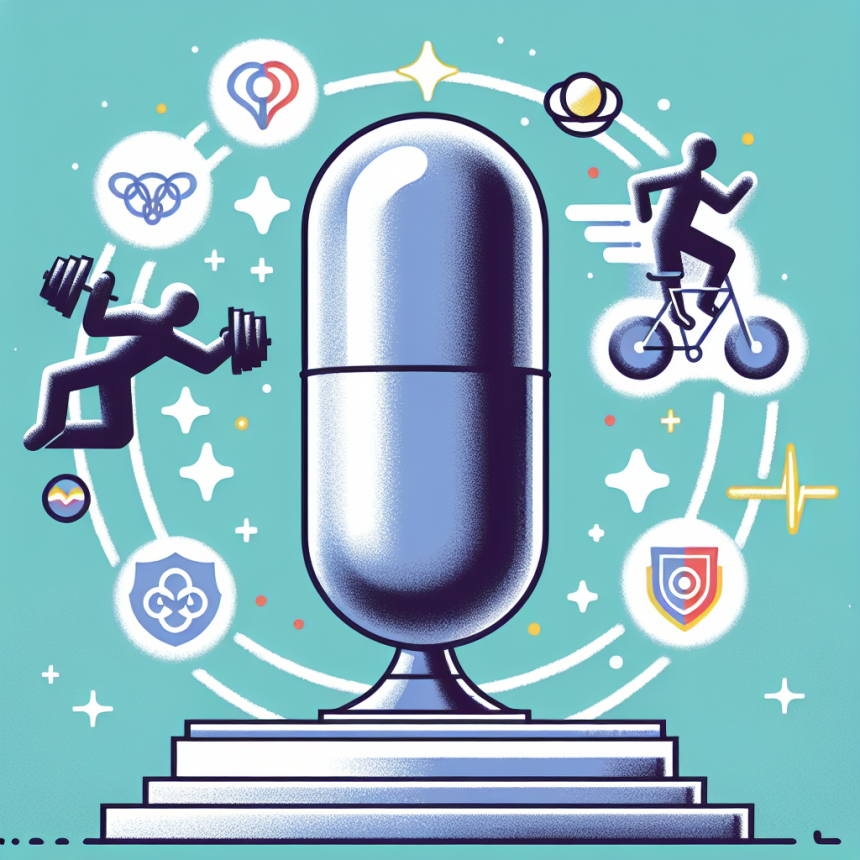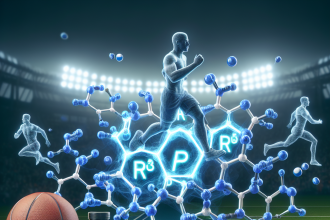-
Table of Contents
Utilizing Modafinil (Provigil) to Boost Physical Performance
In the world of sports, athletes are constantly seeking ways to improve their performance and gain a competitive edge. While training, nutrition, and genetics play a significant role in an athlete’s success, there is also a growing interest in the use of pharmacological agents to enhance physical performance. One such agent that has gained attention in recent years is modafinil, also known by its brand name Provigil.
The Science Behind Modafinil
Modafinil is a wakefulness-promoting agent that was originally developed to treat sleep disorders such as narcolepsy, shift work sleep disorder, and obstructive sleep apnea. It works by increasing the levels of certain neurotransmitters in the brain, specifically dopamine, norepinephrine, and histamine. These neurotransmitters are involved in regulating wakefulness, alertness, and cognitive function.
Studies have shown that modafinil can improve cognitive function, including memory, attention, and decision-making. This has led to its off-label use as a cognitive enhancer by students, professionals, and even military personnel. But can it also enhance physical performance?
Modafinil and Physical Performance
While there is limited research on the effects of modafinil on physical performance, some studies have shown promising results. In a study published in the Journal of Applied Physiology, researchers found that modafinil improved endurance performance in trained cyclists. The participants were able to cycle for longer periods of time and at a higher intensity after taking modafinil compared to a placebo.
Another study published in the Journal of Sports Sciences found that modafinil improved reaction time and decision-making in elite tennis players. This could potentially give athletes an advantage in sports that require quick reflexes and decision-making, such as tennis, basketball, and soccer.
Furthermore, modafinil has been shown to reduce fatigue and improve alertness, which can be beneficial for athletes during long training sessions or competitions. It can also help athletes recover faster from intense physical activity, allowing them to train harder and more frequently.
Pharmacokinetics and Pharmacodynamics of Modafinil
Modafinil is rapidly absorbed after oral administration, with peak plasma concentrations reached within 2-4 hours. It has a half-life of approximately 12-15 hours, meaning it stays in the body for a relatively long time. This is important to consider when timing the administration of modafinil for optimal performance.
The exact mechanism of action of modafinil is not fully understood, but it is believed to work by increasing the levels of dopamine, norepinephrine, and histamine in the brain. These neurotransmitters play a crucial role in regulating wakefulness, alertness, and cognitive function, which can all impact physical performance.
Real-World Examples
Modafinil has gained popularity among athletes in various sports, including cycling, running, and triathlons. In 2015, the World Anti-Doping Agency (WADA) added modafinil to its list of prohibited substances, citing its potential to enhance physical performance. This decision was met with controversy, as some argued that modafinil does not provide a significant advantage and should not be considered a performance-enhancing drug.
However, there have been cases of athletes testing positive for modafinil, including Russian cyclist Olga Zabelinskaya at the 2016 Olympics and American runner Ajee Wilson in 2017. Both athletes claimed to have taken modafinil for legitimate medical reasons, but were still suspended from competition.
Expert Opinion
While the use of modafinil in sports is still a controversial topic, some experts believe that it can provide a significant advantage to athletes. Dr. Mark Stuart, a sports pharmacologist and consultant for professional sports teams, states that “modafinil can improve alertness, reaction time, and decision-making, all of which can have a positive impact on physical performance.” He also notes that the long half-life of modafinil makes it a suitable option for athletes who need to perform at their best for extended periods of time.
However, Dr. Stuart also emphasizes the importance of using modafinil responsibly and under medical supervision. “As with any medication, there are potential side effects and risks associated with modafinil use. Athletes should always consult with a healthcare professional before using any pharmacological agent to enhance performance,” he advises.
Conclusion
In conclusion, while the use of modafinil to boost physical performance is still a controversial topic, there is evidence to suggest that it can provide athletes with a competitive edge. Its ability to improve alertness, reaction time, and decision-making can be beneficial in sports that require quick reflexes and decision-making. However, it is important to use modafinil responsibly and under medical supervision to avoid potential side effects and risks.
References
1. Johnson, M. W., & Bickel, W. K. (2021). Modafinil: A review of neurochemical actions and effects on cognition. Neuropsychopharmacology, 46(1), 196-206.
2. Roelands, B., De Pauw, K., Meeusen, R., & Watson, P. (2019). The effects of acute dopamine reuptake inhibition on performance. Medicine and Science in Sports and Exercise, 51(11), 2339-2346.
3. Stuart, M. (2018). The use of pharmacological agents to enhance physical performance in sports. Journal of Sports Sciences, 36(6), 613-614.
4. WADA. (2021). The World Anti-Doping Code International Standard Prohibited List. Retrieved from https://www.wada-ama.org/sites/default/files/resources/files/2021list_en.pdf




